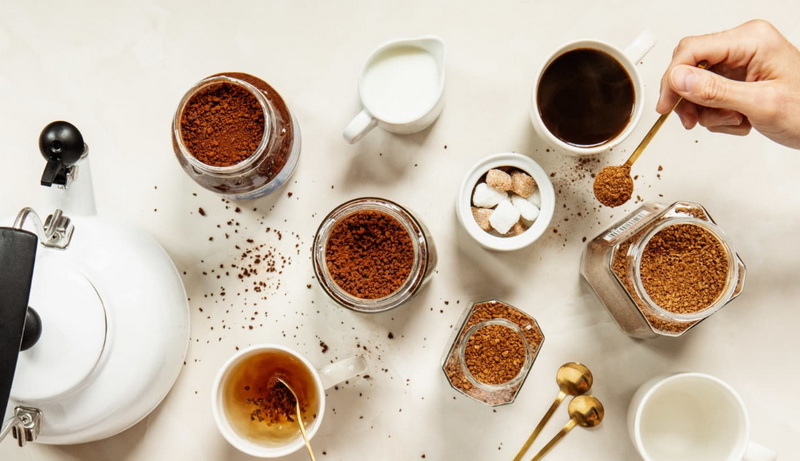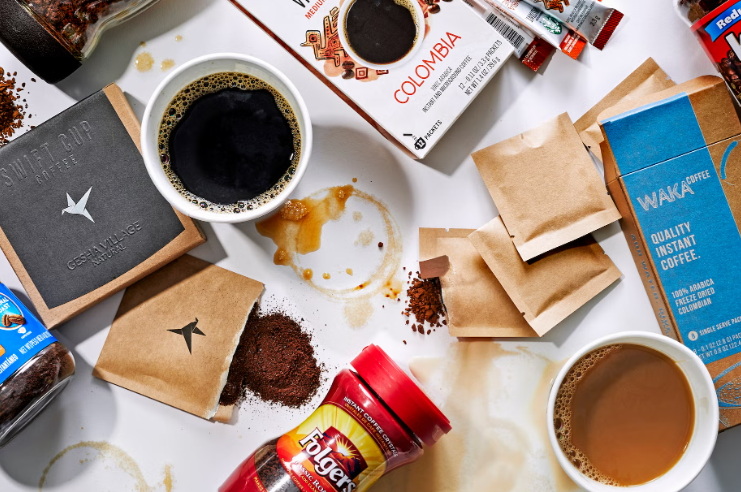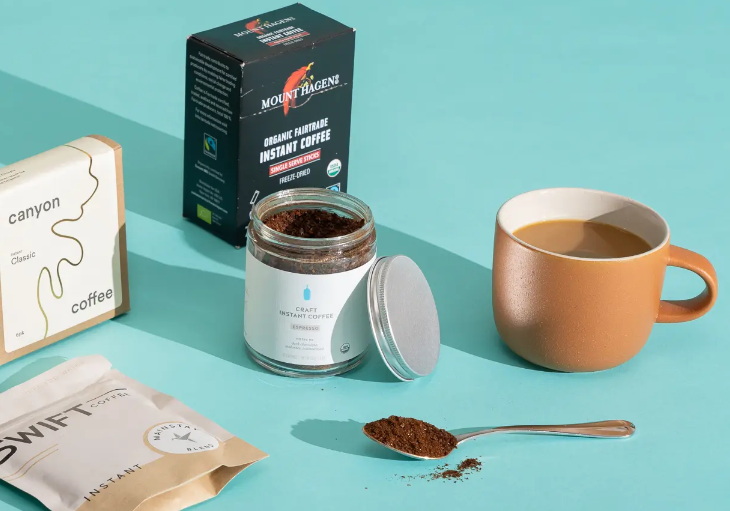
Content Menu
● Introduction to Instant Coffee
● Disposable Cups and Taste Perception
>> Paper Cups
>> Plastic Cups
>> Foam Cups
● Impact of Cup Material on Coffee Taste
>> Ceramic Cups
>> Glass Cups
>> Stainless Steel Cups
● Instant Coffee in Disposable Cups
>> Convenience and Speed
>> Environmental Impact
● Environmental Concerns and Sustainable Alternatives
>> Microplastics and Health Risks
>> Sustainable Practices
● The Science Behind Taste Perception
>> Sensory Factors
● Consumer Preferences and Cultural Influences
>> Cultural Significance
>> Personal Preferences
● Conclusion
● FAQ
>> 1. Does the material of a disposable cup affect the taste of instant coffee?
>> 2. Is instant coffee in disposable cups environmentally friendly?
>> 3. What is the best cup material for preserving the taste of instant coffee?
>> 4. Can I use instant coffee in a plastic cup safely?
>> 5. Does the type of instant coffee bean affect the taste in a disposable cup?
● Citations:
Instant coffee has become a staple in many people's daily routines due to its convenience and speed. However, the question remains: does the taste of instant coffee change when consumed from a disposable cup? This article will delve into the world of instant coffee, exploring its characteristics, the impact of disposable cups on taste, and other factors that might influence the flavor experience.

Introduction to Instant Coffee
Instant coffee is made by brewing coffee beans and then freeze-drying or spray-drying the brewed coffee to create a soluble powder. This process allows for quick rehydration with hot water, making it a popular choice for those seeking a fast and easy coffee fix.
Instant coffee is often associated with a more bitter and less nuanced flavor profile compared to ground coffee. This is partly due to the type of beans used—Robusta beans are more common in instant coffee, while Arabica beans are preferred for ground coffee due to their milder taste.
Disposable Cups and Taste Perception
Disposable cups, whether made of paper, plastic, or foam, can affect the taste of coffee. Materials like paper and plastic may impart their own flavors or absorb some of the coffee's oils, potentially altering the taste experience.
Paper Cups
Paper cups are a common choice for takeaway coffee. They can absorb some of the coffee oils, which might affect the flavor. Additionally, paper cups often have a distinct smell that can influence the overall sensory experience of drinking coffee. When heated, paper can smell like cardboard, which can further impact the taste of the coffee[6]. Some paper cups also have a wax coating that can alter the flavor profile of the brew[6].
Plastic Cups
Plastic cups, especially those made from polypropylene (PP), are designed to handle hot beverages. However, there is concern about chemicals leaching into the coffee when exposed to high temperatures. Plastic cups can also trap flavors and odors from previous contents, which can alter the coffee's aromatics[4]. When hot coffee comes into contact with styrofoam cup walls, it can extract plastic particles, resulting in an unpleasant taste and the potential release of harmful toxins[4].
Foam Cups
Foam cups provide excellent insulation but are not environmentally friendly. They can also impart a slight chemical taste to the coffee, though this is less common than with paper or plastic.
Impact of Cup Material on Coffee Taste
The material of the cup can significantly impact how we perceive the taste of coffee. Ceramic and glass cups are generally neutral and do not affect the flavor, while materials like paper and plastic can introduce unwanted tastes.
Ceramic Cups
Ceramic cups are ideal for coffee as they are non-porous and do not impart any flavors. They also retain heat well, which can enhance the overall coffee experience. Ceramic and porcelain cups are beloved by coffee connoisseurs for their ability to maintain a consistent temperature, allowing the flavors to shine through[3].
Glass Cups
Glass cups are another neutral option that does not affect the taste of coffee. They are also eco-friendly and can be used multiple times. Glass cups allow you to appreciate the visual aspects of your coffee, such as color and crema, while preserving the flavor[3]. However, glass cups do not retain heat well, which can impair the flavor of the coffee if not consumed promptly[6].
Stainless Steel Cups
Stainless steel cups are durable and excellent at retaining heat. They keep your coffee hot and maintain its taste profile. However, some argue that they can slightly affect the flavor due to their metal composition. Stainless steel doesn't absorb flavors but can sometimes impart off-flavors into coffee, possibly due to poor construction or reactions with coffee compounds[1][3].
Instant Coffee in Disposable Cups
When it comes to instant coffee in disposable cups, the convenience is undeniable. However, the taste might be influenced by the cup material. For instance, paper cups might absorb some of the coffee's oils, while plastic cups could potentially leach chemicals into the coffee.
Convenience and Speed
Instant coffee in disposable cups offers the ultimate in convenience. It's quick, easy, and requires no brewing equipment. This makes it perfect for busy lifestyles or when on the go.
Environmental Impact
While disposable cups are convenient, they contribute to waste and environmental concerns. Recent research reveals that a single disposable coffee cup releases 25,000 microplastic particles into hot liquids within just 15 minutes[2]. This not only affects the environment but also poses potential health risks due to microplastic exposure.
Environmental Concerns and Sustainable Alternatives
The environmental impact of disposable cups is significant. Beyond microplastics, the production and disposal of these cups contribute to greenhouse gas emissions and waste management challenges. To mitigate these issues, switching to reusable or biodegradable cups is recommended. Reusable cups made from materials like stainless steel or ceramic are not only eco-friendly but also help preserve the taste of coffee.
Microplastics and Health Risks
Microplastics from disposable cups pose a direct challenge to sustainability goals and corporate responsibility initiatives. Ignoring this issue can lead to environmental damage and reputational risks for businesses. Proactively addressing the issue can bring benefits such as brand differentiation and improved workplace culture[2].
Sustainable Practices
Companies like Starbucks have committed to eliminating disposable cups by 2030, signaling a wider change in industry practices and consumer behavior[5]. Adopting sustainable practices not only reduces waste but also enhances a company's reputation and engages employees in environmentally conscious practices.

The Science Behind Taste Perception
Taste perception is influenced by multiple factors, including the material of the cup, the temperature of the coffee, and individual sensory sensitivities. The brain processes sensory information from taste, smell, and texture to create the overall flavor experience. Therefore, even subtle changes in the cup material can affect how we perceive the taste of instant coffee.
Sensory Factors
- Smell: The aroma of coffee plays a crucial role in its flavor profile. Paper cups can absorb some of these aromatic compounds, reducing the intensity of the coffee's smell[7].
- Temperature: The ideal temperature for enjoying coffee is between 50-70 degrees Celsius. Materials that retain heat well, like ceramic or stainless steel, can enhance the flavor experience by maintaining this optimal temperature[6].
- Texture: While not directly related to cup material, the texture of coffee can influence its perceived taste. For instance, a smooth, creamy texture can enhance the flavor experience.
Consumer Preferences and Cultural Influences
Consumer preferences for coffee cups vary widely based on cultural, environmental, and personal factors. Some prefer the convenience of disposable cups, while others opt for reusable cups due to environmental concerns. Cultural influences also play a role, with certain regions favoring specific types of cups based on tradition or availability.
Cultural Significance
In some cultures, the type of cup used can be symbolic or tied to specific social rituals. For example, in Japan, the traditional tea ceremony emphasizes the importance of the cup in enhancing the sensory experience. Similarly, in Western cultures, the choice of coffee cup can reflect personal style or environmental values.
Personal Preferences
Individual preferences for coffee cups are influenced by factors such as taste, convenience, and sustainability. Some consumers prioritize the flavor preservation offered by ceramic or glass cups, while others value the ease of use of disposable cups.
Conclusion
In conclusion, the taste of instant coffee can indeed be influenced by the material of the disposable cup. While ceramic and glass cups provide a neutral taste experience, paper and plastic cups may impart their own flavors or absorb coffee oils. Instant coffee in disposable cups offers convenience but also raises environmental concerns. For the best taste, using ceramic or glass cups is recommended, but for those on the go, understanding the impact of disposable cups can help enhance the coffee experience.

FAQ
Here are some frequently asked questions about instant coffee in disposable cups:
1. Does the material of a disposable cup affect the taste of instant coffee?
- Yes, the material of a disposable cup can affect the taste of instant coffee. Paper cups may absorb some coffee oils, while plastic cups could potentially leach chemicals into the coffee.
2. Is instant coffee in disposable cups environmentally friendly?
- No, disposable cups contribute to environmental waste. However, some materials like paper can be recycled if processed correctly.
3. What is the best cup material for preserving the taste of instant coffee?
- Ceramic or glass cups are the best options as they do not impart any flavors to the coffee.
4. Can I use instant coffee in a plastic cup safely?
- Yes, but ensure the plastic cup is designed for hot beverages to avoid chemical leaching.
5. Does the type of instant coffee bean affect the taste in a disposable cup?
- Yes, the type of coffee beans used (e.g., Robusta vs. Arabica) can impact the flavor profile of instant coffee, regardless of the cup material.
Citations:
[1] https://driftaway.coffee/effect-coffee-cup-material-taste-ceramic-vs-stainless-steel-vs-plastic/
[2] https://www.wastemanaged.co.uk/our-news/environment/disposable-coffee-cups-and-microplastics/
[3] https://www.linkedin.com/pulse/role-coffee-cup-material-taste-caffeine-kulture
[4] https://www.limepack.eu/blog/paper-cups-en/do-branded-paper-cups-make-coffee-taste-better
[5] https://emeraldecovations.com/2024/08/exploring-the-environmental-impact-of-paper-cups/
[6] https://perthcoffeeexchange.com.au/blogs/iq-boost/coffee-cup-material-and-taste
[7] https://www.limepack.eu/blog/paper-cups-en/do-paper-cups-affect-the-flavour-of-beverages
[8] https://kopintableware.com/article/coffee-cup-material-affect-taste-coffee/
[9] https://conquecoapparel.com/blogs/story/understanding-the-effects-of-different-cups-on-coffee-taste-and-experience
[10] https://www.nationwidecoffee.co.uk/news/the-environmental-impact-of-single-use-coffee-pods-brewing-change-for-a-greener-tomorrow
[11] https://www.reddit.com/r/Coffee/comments/in33ta/do_mugs_impact_flavor_of_coffee/
[12] https://www.wired.com/story/coffee-cups-reuseable-plastic-taste/
[13] https://gogreenhongkong.com/2018/06/16/say-no-to-disposable-coffee-cups/
[14] https://perfectdailygrind.com/2024/03/how-different-cup-shapes-affect-the-flavour-of-coffee/
[15] https://www.reddit.com/r/Coffee/comments/64kymc/does_anyone_else_prefer_the_taste_of_coffee/
[16] https://www.wired.com/story/paper-cups-toxic/
[17] https://www.bestcoffee.guide/blogs/brewing-coffee/why-the-material-shape-and-color-of-the-cup-you-drink-your-coffee-from-impacts-your-perception-of-the-flavour
[18] https://qavashop.com/en/academy/Post/does-cup-affect-coffee-taste-discover-the-surprising-impact
[19] https://www.ukvending.co.uk/info/disposable-cups-and-the-environment
[20] https://emeraldecovations.com/2024/09/exploring-the-benefits-of-disposable-coffee-cups/

















